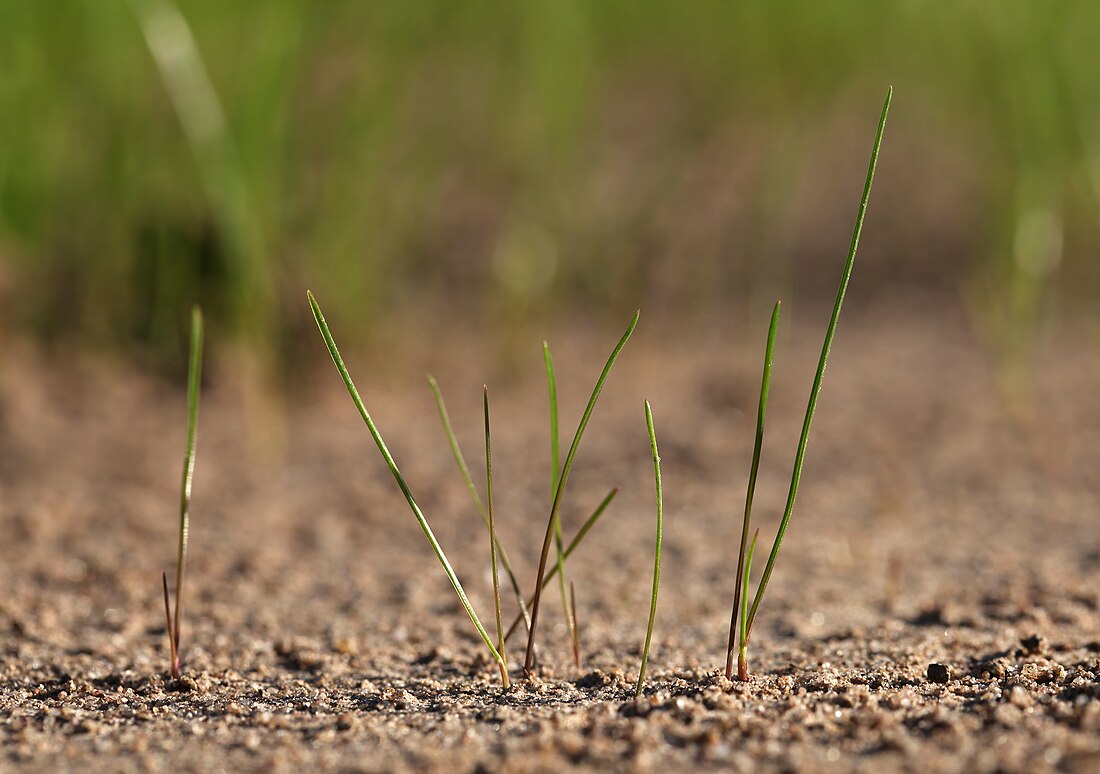Top Qs
Timeline
Chat
Perspective
Graminoid
Herbaceous plant with grassy morphology From Wikipedia, the free encyclopedia
Remove ads
In botany and ecology, a graminoid refers to a herbaceous plant with a grass-like morphology,[1] i.e., elongated culms with long, blade-like leaves. They are contrasted with forbs, herbaceous plants without grass-like features.

The plants most often referred to include the families Poaceae (grasses in the strict sense), Cyperaceae (sedges), and Juncaceae (rushes). These are not closely related but belong to different clades in the order Poales. The grasses (Poaceae) are by far the largest family, with some 12,000 species.
Remove ads
Common traits
A graminoid is a plant that has a simple structure of repeated parts that have their meristems, growing parts, within their stems. They frequently have well-developed ways of reproducing vegetatively, without needing to grow from pollinated seeds. As a group, the graminoids produce fewer toxins than other plants and instead rely on physical defenses against being eaten by herbivores. Their evolution has been in response to grazing by both mammals and insects.[2]
Remove ads
Ecology
Besides their similar morphology, graminoids share a widespread occurrence and often dominance in open habitats such as grasslands or marshes. They can, however, also be found in the understory of forests. Sedges and rushes tend to prefer wetter habitats than grasses.
Gallery
- Examples of graminoid plants
- Common rush (Juncus effusus), Juncaceae
- Nutsedge (Cyperus capitatus), Cyperaceae
- Festuca cinerea, Poaceae
Etymology
Look up graminoid in Wiktionary, the free dictionary.
The word graminoid is derived from Latin grāmen 'grass; herb', with the suffix -oid denoting '-like; resembling, characteristic of'.[3] The Latin grāmen may be related to the English grass through a common word in the Proto-Indo-European language. However, grass is a Germanic word comparable to the Old Frisian gres or Old High German gras. In Old English it was gærsum which changed over time into the modern word. It was first spelled grass in 1393, but continued to be spelled variously through at least 1637.[4]
Remove ads
See also
References
Wikiwand - on
Seamless Wikipedia browsing. On steroids.
Remove ads



